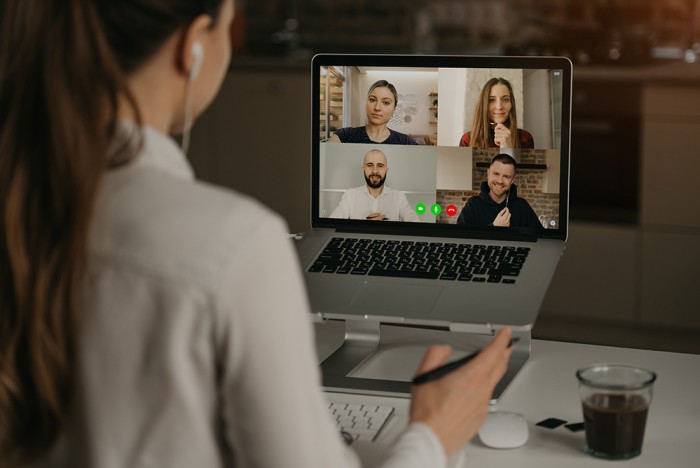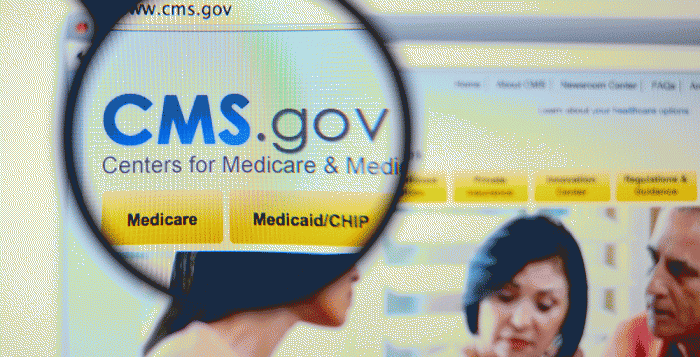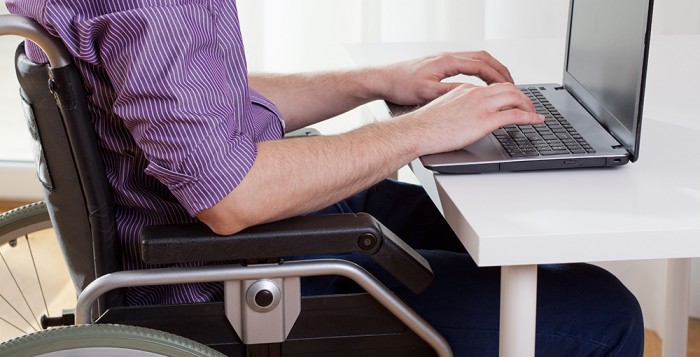2020 PA Community Alliance Summit Is Going Virtual!
ANCOR Urges: Apply for COVID Emergency Funding to Show Congress They Need to Do More
CMS Issues Medicare Physician Fee Schedule Proposed Rule for CY 2021
The Centers for Medicare and Medicaid Services (CMS) placed on display at the Federal Register, the calendar year (CY) 2021 Medicare Physician Fee Schedule proposed rule. Some of the proposed provisions include:
PAYMENT ISSUES
- Medicare Telehealth – CMS proposes to add certain services to the permanent telehealth list, including:
- Neurobehavioral Status Exam
- Care Planning for Patients with Cognitive Impairment
- Home Visits
The proposed rule also includes a provision to create a new list of telehealth services (Category 3 ) that would only be available on a temporary basis during public health emergencies (PHE), and through the end of the calendar year in which the PHE ends. These services include:
- Home Visits
- Emergency Department Visits
- Nursing Facility Discharge Day Management
- Psychological and Neuropsychological Testing
CMS is soliciting feedback for additional services that should be added to the temporary telehealth list. CMS also clarifies the types of clinicians that can provide assessment and management services, virtual check-ins and remote evaluation services. Additionally, the proposed rule includes a provision that would permit physical and occupation therapists to be permitted to independently furnish maintenance therapy to outpatients, if delegated by a therapist.
- Remote Physiological Monitoring (RPM) Services- CMS clarifies in this proposed rule their payment policies related to RPM services described by CPT codes 99453, 99454, 99091, 99457, and 99458. In addition, CMS is proposing as a permanent policy two clarifications to RPM Services that were finalized in response to the PHE for the COVID-19 pandemic.
- Immunization Services – CMS is proposing to establish new payment rates for immunization administration services described by CPT codes 90460, 90461, 90471, 90472, 90473, and 90474 and HCPCS codes G0008, G0009, and G0010 that better reflect the relative resources involved in furnishing all of these services, in consideration of payment stability for stakeholders, public health concerns and the import of these services for Medicare beneficiaries.
- Direct Supervision by Interactive Telecommunications Technology – For the duration of the PHE for the COVID-19 pandemic, for purposes of limiting exposure to COVID-19, CMS adopted an interim final policy revising the definition of direct supervision to include virtual presence of the supervising physician or practitioner using interactive audio/ video real-time communications technology (85 FR 19245). CMS recognized that in some cases, the physical proximity of the physician or practitioner might present additional infection exposure risk to the patient and/or practitioner. In this proposed rule, CMS is proposing to allow direct supervision to be provided using real-time, interactive audio and video technology (excluding telephone that does not also include video) through December 31, 2021 and is seeking information from commenters as to whether there should be any guardrails in effect as they finalize this policy though December 31, 2021, or consider it beyond the time specified and what risks this policy might introduce to beneficiaries as they receive care from practitioners that would supervise care virtually in this way. In addition to comments regarding patient safety/clinical appropriateness, CMS is seeking comment on potential concerns around induced utilization and fraud, waste, and abuse and how those concerns might be addressed..
PROFESSIONAL SCOPE OF PRACTICE PROPOSALS
- Supervision of Diagnostic Tests by Certain Nonphysician Practitioners (NPPs) – CMS is proposing to make permanent following the COVID-19 PHE, the same policy that was finalized under the May 1st COVID-19 IFC, for the duration of the COVID-19 PHE. This proposal would allow nurse practitioners (NPs), clinical nurse specialists (CNSs), physician assistants (PAs) and certified nurse-midwives (CNMs) to supervise the performance of diagnostic tests in addition to physicians. Prior to the May 1st COVID-19 IFC, these nonphysician practitioners were already authorized under Medicare regulations to order and furnish diagnostic tests, while as a basic rule, generally only physicians (medical doctors and doctors of osteopathy) were authorized to supervise the performance of diagnostic tests. However, if finalized on a permanent basis effective January 1, 2021, NPs, CNSs, PAs and CNMs would be allowed under the Medicare Part B program to supervise the performance of diagnostic tests within their state scope of practice and applicable state law, provided they maintain the required statutory relationships with supervising or collaborating physicians.
- Pharmacists Providing Services Incident to Physicians’ Services – CMS is reiterating the clarification provided in the May 1st COVID-19 IFC (85 FR 27550 through 27629), that pharmacists fall within the regulatory definition of auxiliary personnel under our “incident to” regulations. As such, pharmacists may provide services incident to the services, and under the appropriate level of supervision, of the billing physician or NPP, if payment for the services is not made under the Medicare Part D benefit. This includes providing the services incident to the services of the billing physician or NPP and in accordance with the pharmacist’s state scope of practice and applicable state law.
- Therapy Assistants Furnishing Maintenance Therapy – CMS is proposing to make permanent the Part B policy for maintenance therapy services that were adopted on an interim basis for the PHE in the May 1st COVID-19 IFC that grants a physical therapist (PT) and occupational therapist (OT) the discretion to delegate the performance of maintenance therapy services, as clinically appropriate, to a therapy assistant – a physical therapist assistant (PTA) or an occupational therapy assistant (OTA). CMS is making this proposal because they no longer believe all such maintenance therapy services require the PT or OT to personally perform them and to better align our Part B policy with that paid under Part A in skilled nursing facilities and the home health benefit where maintenance therapy services may be performed by a PT/OT or a PTA/OTA. This proposed policy would allow PTs/OTs to use the same discretion to delegate maintenance therapy services to PTAs/OTAs that they utilize for rehabilitative services. CMS is also proposing to revise their sub-regulatory provisions to clarify that PTs and OTs no longer need to personally perform maintenance therapy services and to remove the prohibitions on PTAs and OTAs from furnishing such services. Should the PHE end before January 1, 2021, the PT or OT would need to personally furnish the maintenance therapy services until the proposed policy change takes effect.
- Medical Record Documentation – CMS finalized modifications to the medical record documentation requirements for the physician and certain NPPs. CMS clarifies that physicians and NPPs, including therapists can review and verify documentation entered into the medical record by members of the medical team for their own services that are paid under the PFS. CMS also clarifies that therapy students, and students of other disciplines, working under a physician or practitioner who furnishes and bills directly for their professional services to the Medicare program, may document in the record so long as it is reviewed and verified (signed and dated) by the billing physician, practitioner, or therapist.
The proposed rule is scheduled to be published in the Federal Register on August 17, 2020. Comments on the proposed rule will be accepted until October 5, 2020.
DHS Secretary to People Needing Background Checks: Stay Up to Date w/Clearances
HHS Releases COVID-10 Testing Plans From States
The Department of Health and Human Services (HHS) recently released and publicly posted the July 2020 through December 2020 COVID-19 testing plans from all states. These testing plans serve as a roadmap developed in partnership with the Federal government for each jurisdiction’s monthly 2020 testing strategy for SARS-CoV-2 (the virus that causes COVID-19). The plans include details on responding to surges in cases and reaching vulnerable populations including minorities, immunocompromised individuals, and older adults.
Each state plan is required to include details of critical parameters for state testing strategies, including target numbers of tests per month, as outlined in the Centers for Disease Control and Prevention’s (CDC’s) Epidemiology and Laboratory Capacity for Prevention and Control of Emerging Infectious Diseases (ELC) guidance document.
Accommodation Strategies for Returning to Work During the COVID-19 Pandemic
The Job Accommodation Network (JAN) posted a blog on “Accommodation Strategies for Returning to Work During the COVID-19 Pandemic.” The blog examines strategies for returning workers with disabilities to the workplace during the pandemic. Solutions are suggested to limit the risk of exposure to COVID-19 and address physical distancing and communication needs.
Free Webinar Series from ANCOR
Provider Relief Fund Webinar Thursday, August 13
Tomorrow, Thursday, August 13 at 3:00 pm there will be a Provider Relief Fund Webinar. If you are interested in learning more about this program, please register here.
Additional Funding Opportunity for COVID-impacted Health Care Providers
FINANCIAL SUPPORT FOR MILLIONS OF HEALTH CARE PROVIDERS NATIONWIDE
Up to 2% of patient revenue regardless of a previous disbursement.
Many health care providers are experiencing significant financial hardships in the COVID-19 pandemic. Congress provided $175 billion in relief funds to the U.S. Department of Health and Human Services (HHS) to deliver financial relief to hospitals and other health care providers, including those on the front lines of the coronavirus response. Since March, HHS, through the Health Resources and Services Administration (HRSA), has been distributing the funds to various providers in phases to support their increased healthcare-related expenses or lost revenue that are attributable to COVID-19; and to reimburse claims for the testing and treatment of uninsured individuals diagnosed with COVID-19.
The latest phase of funding is now available through August 28, 2020. Visit this web page to learn more and get started with the application.
Who is eligible to apply?
- Providers who bill Medicare, Medicaid, Medicaid managed care, or CHIP
- Dental providers who accept insurance, as well as bill patients directly
- First-time or previous applicants may apply as long as they haven’t already received 2% of their patient revenue
How to apply?
- Follow the 6-Step Application Process
- Provider Relief Fund Application and Attestation Portal
- If you encounter challenges with the application, call the Provider Support Line at 866-569-3522; for TTY, dial 711
















